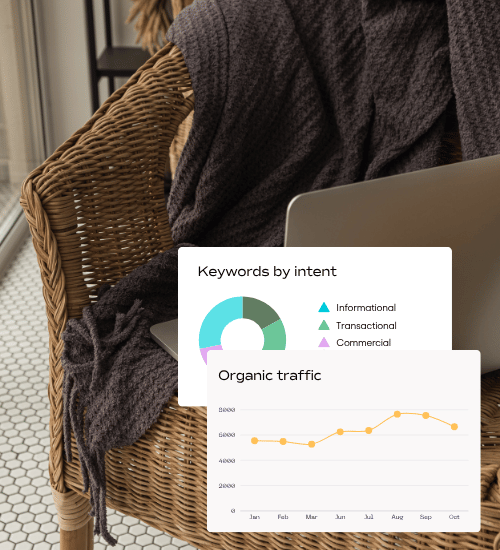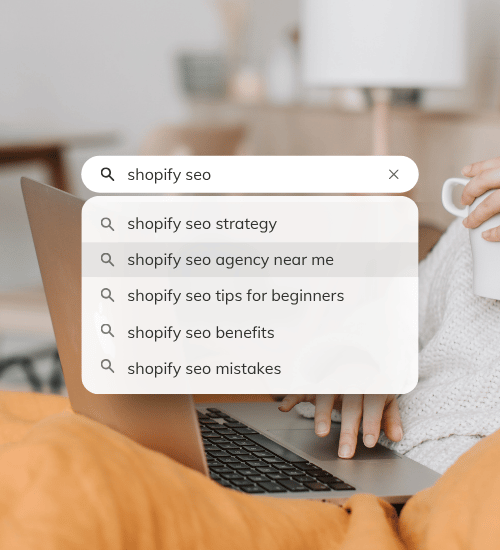
Most of my day is spent helping businesses untangle things that got complicated slowly and quietly over time. Like, finding broken links, raising tickets for developers, and when to just let 404s sit quietly in the background waiting for Google to get the picture.
I’m the person who comes in and says, “Okay, let’s make this make sense again.”
How I got into SEO
I actually began my career in SEO as a freelance copywriter so many years ago (around 2009!) and that naturally evolved into SEO. When you’re writing content for websites, you can’t ignore SEO.
I didn’t really think too much about technical SEO until I met one (married him, btw). In 2014 we went to an SEO conference (BrightonSEO) and the more I listened to OG SEOs talk about the importance of a healthy structured website, the more I got involved and wanted to learn and experiment more.
But freelance work can be isolating, and eventually, I found myself stepping into project management for Shopify builds (it was the platform I was the closest to and had the most knowledge of).
When I joined Absolute Design, the spark for SEO came back and my insights were not only welcomed, but actively encouraged to act on them. SEO stopped being a silo and became something more integrated — part of a wider team, like Shopify developers and others to talk SEO with.
The work behind the wins
SEO isn’t glamorous. Okay, well.. it is when I see a real uplift in metrics! But doing the work that leads to that is challenging, for sure. It’s sitting inside the details: product data, category structure, content audits, technical analysis, reporting and roadmapping.
The tools matter too. I don’t just use one. I use a combination of GA4, Search Console, Screaming Frog, Semrush, even small chrome extensions like Ahrefs inspector and SERP visualiser.
But the real deal isn’t the data itself. It’s in translating what the data means for real people and real decisions. There’s a moment when someone goes from “I have no idea what this is telling me” to “Ah cool, now I understand what to do.” That shift is the thing I care about most.
What SEO looks like day to day
Day to day, my job as an ecommerce SEO strategist is about small, steady improvements. I’ll move between technical SEO to content strategy, competitor analysis, and the smaller SEO questions from clients.
- Identifying what’s working, what’s confusing our clients, what’s dipping and why.
- creating content schedules for our insight articles that are led by data and search intent.
- Reviewing Shopify product data, metafields, collections and filters (and chatting to our devs about them) to make sure products are findable, understandable and properly grouped.
- Running audits (some that can take days to crawl!) and analyse the data, making recommendations.
- Looking at messy analytics data and explain it in normal language so teams and clients understand what’s happening and what to do next to resolve it (eg. attribute it to a core Google update).
- Helping clients prioritise when everything feels urgent, turning a chaotic email to a calm response.
- Writing case studies after we’ve helped a client get some real good results we want to shout about.
Thankfully, our clients are so great to work with – they know that good SEO isn’t an overnight hit.
Beyond SEO strategy and consultancy
Project delivery and client experience
I originally joined Absolute to help guide projects from that early, slightly abstract planning stage into the lived reality of builds and improvements. I still do this, exclusively for Shopify migration projects.
This often looks like:
- Scoping what needs to be done (and what actually matters).
- Moving estimates into our agency management tool with project plans.
- Keeping work moving steadily without panic bookings or draughts.
- Reviewing our designer’s custom designs so it aligns with the creative brief.
- Leading the Shopify project internal process, from planning to QA to launch.
Leading our SEO services
When I first joined Absolute, we didn’t have a fully defined SEO service. We had knowledge, experience, and strong eCommerce instincts, but the process needed structure. So I began building it out, starting with the essentials: technical audits, useful reports, and ongoing SEO consultancy for our support clients.
Now, our SEO delivery runs through three core pillars:
- SEO audits both before and after migration that go beyond a list of running automated reports. We’re focusing on prioritisation, clarity, and what are quick wins for our clients.
- Monthly SEO reporting for our support clients (with technical SEO audits, this is often what moves a client from project to support) tied to technical issues and real metrics connected to GA4.
- SEO consultancy and support woven into our support clients’ day-to-day decisions. For one high priority client, this is a daily occurrence and I love getting into it, doing some Sherlock work!
Are you looking for SEO help for your Shopify store?
Most people come to us at a point where their website is technically working, but something feels harder than it should. Maybe product pages don’t really say what they need to say. Maybe reporting feels like numbers without meaning. Maybe the navigation grew in five different directions over time.
Or maybe it’s nothing specific. Just that quiet sense that things could be clearer.
That’s usually the point where a conversation helps. Not a pitch. Not a strategy deck. Just space to look at what’s going on and understand what’s getting in the way
I’m not interested in overwhelming anyone with tasks or reinventing everything for the sake of it. I’m interested in helping you see what matters, what doesn’t, and what to do next.
If you’d like to talk through where you are and what clarity might look like, you’re welcome to reach out. Message me on LinkedIn, send an email, whatever feels natural. No pressure. Just two people looking at a website and figuring out how to make it make more sense.
Oh, and while this article is mostly about Shopify SEO, we also support our clients for Magento SEO too!




